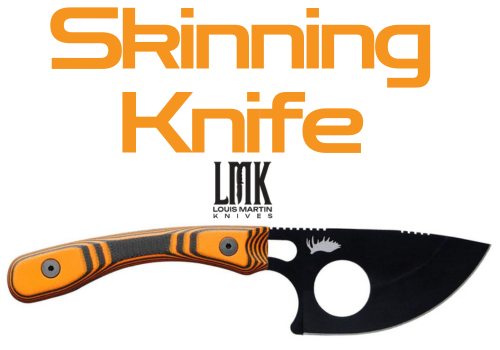
Introduction
Skinning is a fundamental skill in hunting and outdoor activities, essential for both meat preservation and trophy preparation. In this comprehensive guide, we’ll explore the art of skinning, providing essential tips and techniques for using a skinning knife effectively.
Understanding Your Skinning Knife
Understanding Your Skinning Knife is essential before embarking on any skinning task. It’s not just about having a sharp blade; it’s about selecting the right tool for the job. We’ll delve into the anatomy of a skinning knife, discussing the various components such as the blade, handle, and tang, and how each contributes to overall performance. Furthermore, we’ll explore the different types of skinning knives
available, including drop-point, clip-point, and gut-hook designs, and their specific uses in the field. By understanding the nuances of each knife type and its intended purpose, you can make informed decisions when selecting the perfect tool for your skinning needs. Whether you’re processing a large game or skinning a small game, choosing the right knife based on factors like blade shape, size, and handle design can significantly impact your efficiency and the quality of your work.
Preparing Your Workspace
Preparing Your Workspace is the foundation for a successful skinning session. Beyond cleanliness and lighting, organization and safety measures are paramount. We’ll emphasize the importance of not only having a clean and well-lit workspace but also ensuring that it’s organized and free from clutter. Additionally, we’ll discuss the importance of having a designated area for skinning, preferably one with easy access to running water for cleaning purposes. Gathering necessary tools and equipment is crucial, including a sharp skinning knife, a sturdy cutting board, and protective gloves to prevent cuts and contamination. Furthermore, we’ll highlight the significance of properly securing the animal carcass or hide to prevent movement and ensure stability during the skinning process. Utilizing tools such as skinning hooks or gambrels can aid in securely suspending the carcass, allowing for easier access and more controlled cutting motions.
Skinning Techniques
Skinning Techniques are essential skills that every hunter and outdoorsman should master to ensure efficient and precise results. In addition to proper grip and hand positioning, we’ll delve into the importance of body posture and stance in maintaining control and stability during the skinning process. Furthermore, we’ll provide comprehensive step-by-step instructions for skinning various types of animals, ranging from deer and rabbits to fish and game birds. Each animal presents its unique challenges, from navigating around joints and bones to handling tough areas and delicate hides. We’ll offer expert tips and techniques for safely and effectively skinning each type of animal, ensuring minimal damage to the meat or hide. Additionally, we’ll discuss the importance of using the right tools for the job, including specialized skinning knives and implements designed for specific tasks. By mastering these techniques and incorporating them into your skinning routine, you can achieve professional-quality results with every skinning session, whether in the field or at home.
Safety Considerations
Safety Considerations are paramount when it comes to handling sharp knives, particularly during skinning activities where precision and control are crucial. While using a sharp knife enhances efficiency, it also significantly reduces the risk of accidents and injuries. In addition to emphasizing the importance of a sharp blade, we’ll stress the significance of maintaining the knife’s sharpness throughout the skinning process to ensure optimal safety and performance. Additionally, we’ll discuss the importance of maintaining a neutral wrist position to prevent fatigue and strain during prolonged skinning sessions.
Maintaining Your Skinning Knife
Proper maintenance of your skinning knife is essential for ensuring its longevity and peak performance throughout its lifespan. Regular maintenance not only extends the life of your knife but also ensures consistent cutting efficiency. We’ll discuss the importance of cleaning and sanitizing your knife after each use to prevent contamination and maintain hygiene standards. Proper cleaning involves washing the blade with warm, soapy water, drying it thoroughly with a clean cloth, and applying a thin layer of food-grade mineral oil to prevent rust and corrosion.
Advanced Tips and Tricks
For seasoned hunters and outdoor enthusiasts, we’ll offer advanced techniques that go beyond basic skinning methods, focusing on tackling challenges presented by thick hides or complex anatomical features. In addition to mastering traditional skinning techniques, we’ll delve into specialized approaches for handling large games with tough hides, such as elk or bear. These advanced techniques may involve strategic cuts and maneuvers to navigate through dense layers of fur or thick skin, ensuring minimal damage to the hide and preserving its integrity.
Conclusion
In conclusion, mastering the art of skinning is a valuable skill for hunters and outdoor enthusiasts alike. By following the essential tips and techniques outlined in this guide, you can enhance your skinning proficiency and achieve superior results in the field. Remember to practice and refine your skills regularly, and always prioritize safety when handling sharp custom knives.






